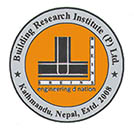
Today (NST)
Saturday, Apr 26, 2025
Smart Search
Please post in your Technical Queries, Comments & Suggestions to Contact us......
Advertisement

For Advertisement
|
|
| Subscribe to BREINS Sci-Tech |
| Visit this group |

Concrete Technology
Angularity
Number
Another aspect of the shapes of aggregates is its “angularity” that
affects the degree of packing of particles. One of the methods of expressing
the angularity qualitatively is by a figure called “Angularity Number”.
This is based on the percentage voids in the aggregate after compaction
in a specified manner.
A quantity of single sized aggregate is filled into metal cylinder of 3 litres capacity. The aggregates are compacted in a standard manner and the percentage of void is found out. The void can be found out by pouring water to the cylinder to bring the level of water up to the brim. If the void is 33 percent the angularity of such aggregate is considered zero. If the void is 44 percent the angularity number of such aggregate is considered 11. In other words, if the angularity number is zero, the solid volume of the aggregate is 67 percent and if the angularity number is 11, the solid volume of the aggregate is 56 percent. The normal aggregates with an angularity number ranging 0 to 11 are considered to make suitable concrete. The angularity number zero represents the most practicable rounded aggregates and the angularity number 11 indicates the most angular aggregates that could be tolerated for making concrete not so unduly harsh and uneconomical.
The angularity number is the index that gives the interlocking of aggregate in the concrete. Interlocking of the aggregate is inversely proportional to the flakiness index or the elongation index.
Surface Texture
of Coarse Aggregates
Surface texture of the aggregates is the property of its surface that
classifies it into polished or dull, smooth or rough. Surface texture
depends on the hardness, grain size and pore characteristics of the
parent material and degree to which forces acting on the particle surface
have smoothed or roughened it. Hard, dense, fine-grained materials will
generally have smooth fracture surfaces.
Rough particles have higher surface area due to its roughness hence require more cement paste content for a given workability. Experiments have shown that rough textured aggregates develops higher bond strength in tension than smooth textured aggregate for a given water-cement ratio. As surface smoothness increases, contact area decreases, hence a highly polished particle will have less bonding area with cement-paste than a rough particle of the same volume. A smooth particle however will require a thinner layer of paste to lubricate its movements with respect to other aggregate particles. It will, therefore, permit denser packing for equal workability and hence, will require lower cement-paste content than rough particles; hence an economical one.
Generally, texture characteristics which permit no penetration of the surface of the particles by the paste are not conducive to good bond, and hence softer, porous and mineralogically heterogeneous particles result in a better bond.
Strength
of Coarse Aggregates
Strength of coarse aggregates is difficult to measure. While we talk
about the strength of coarse aggregates it refers to the crushing strength
of the aggregate itself.
However, the required information on strength of coarse aggregates can be obtained from indirect tests: crushing strength of prepared rock samples, crushed value of bulk aggregate, and performance of aggregate in concrete. Tests on prepared rock samples are little used, but the average value of crushing strength of such samples is about 200 MPa, although many excellent aggregates range in strength down to 80 MPa. It should be observed that the required aggregate strength is considerably higher than the normal range of concrete strength because the actual stresses at the points of contact of individual particles may be far in excess of the nominal applied compressive stress.
On the other hand, aggregate of moderate or low strength and modulus of elasticity can be valuable in preserving the integrity of concrete, because volume changes under the applied load lead to lower stress in the cement-paste when the aggregate is compressible. Whereas a rigid aggregate might lead to cracking of the surrounding cement-paste.